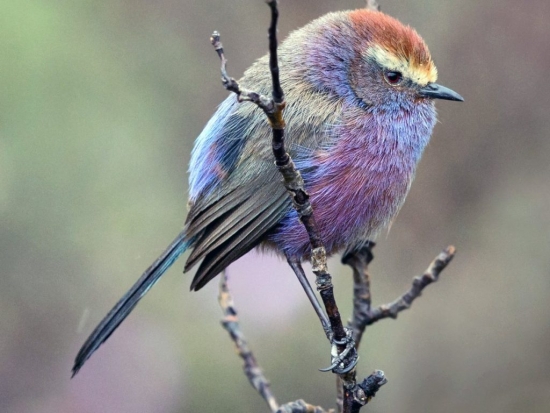
White-browed Tit Warbler (Leptopoecile sophiae)
Common name:
white-browed tit-warbler (en); chapim-de-Sophie (pt); mésange de Sophie (fr); carbonerito de Sophie (es); purpurhähnchen (de)
Taxonomy:
Order Passeriformes
Family Sylviidae
Range:
This species is found in central China and along the Himalayas mountain range into north-western China, Tajikistan, Kyrgyzstan, and marginally into northern India, Pakistan, Uzbekistan and Kazakhstan.
Size:
These birds are 8,5-10 cm long and weigh 6-8 g.
Habitat:
The white-browed tit-warbler is found in mountain temperate forests and scrublands, at altitudes of 2.200-5.000 m.
Diet:
They hunt small insects, including butterflies, gasshoppers and flies, and spiders, while also taking some seeds and berries during autumn and winter.
Breeding:
These birds breed in April-August. The nest is built by both sexes, consisting of a domed structure with an entrance near the top, made of moss, grass stems, hairy seeds animal hair, which is lined with the feathers and hairs, and placed in a scrub, up to 3 m above the ground. The female lays 4-6 whitish eggs with reddish-brown spots which are incubated by both sexes for 16-23 days. The chicks are fed by both parents and fledge 14-21 days.
Conservation:
IUCN status - LC (Least Concern)
This species has a very large breeding range and is reported to be locally common. The population is suspected to be stable in the absence of evidence for any declines or substantial threats.



